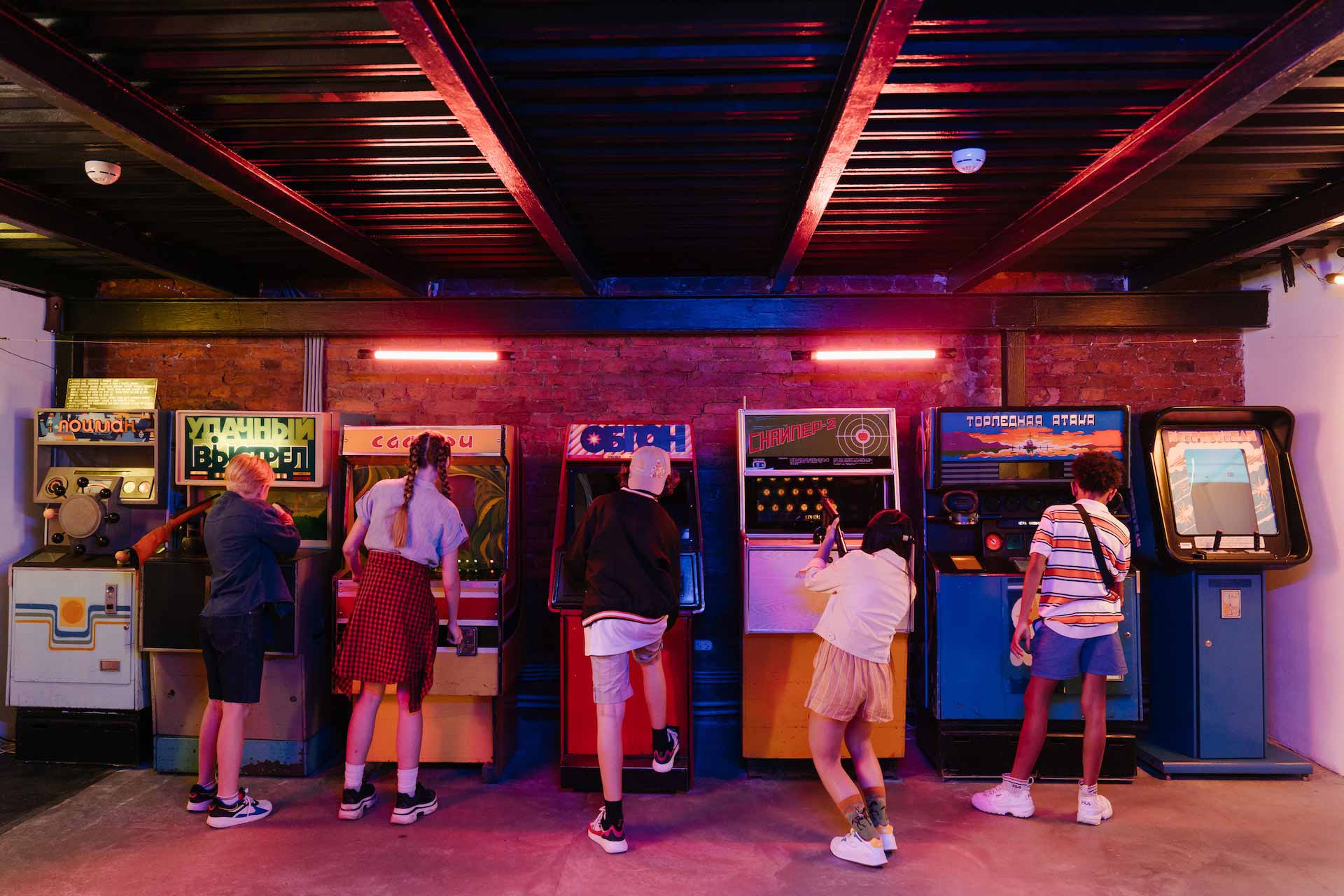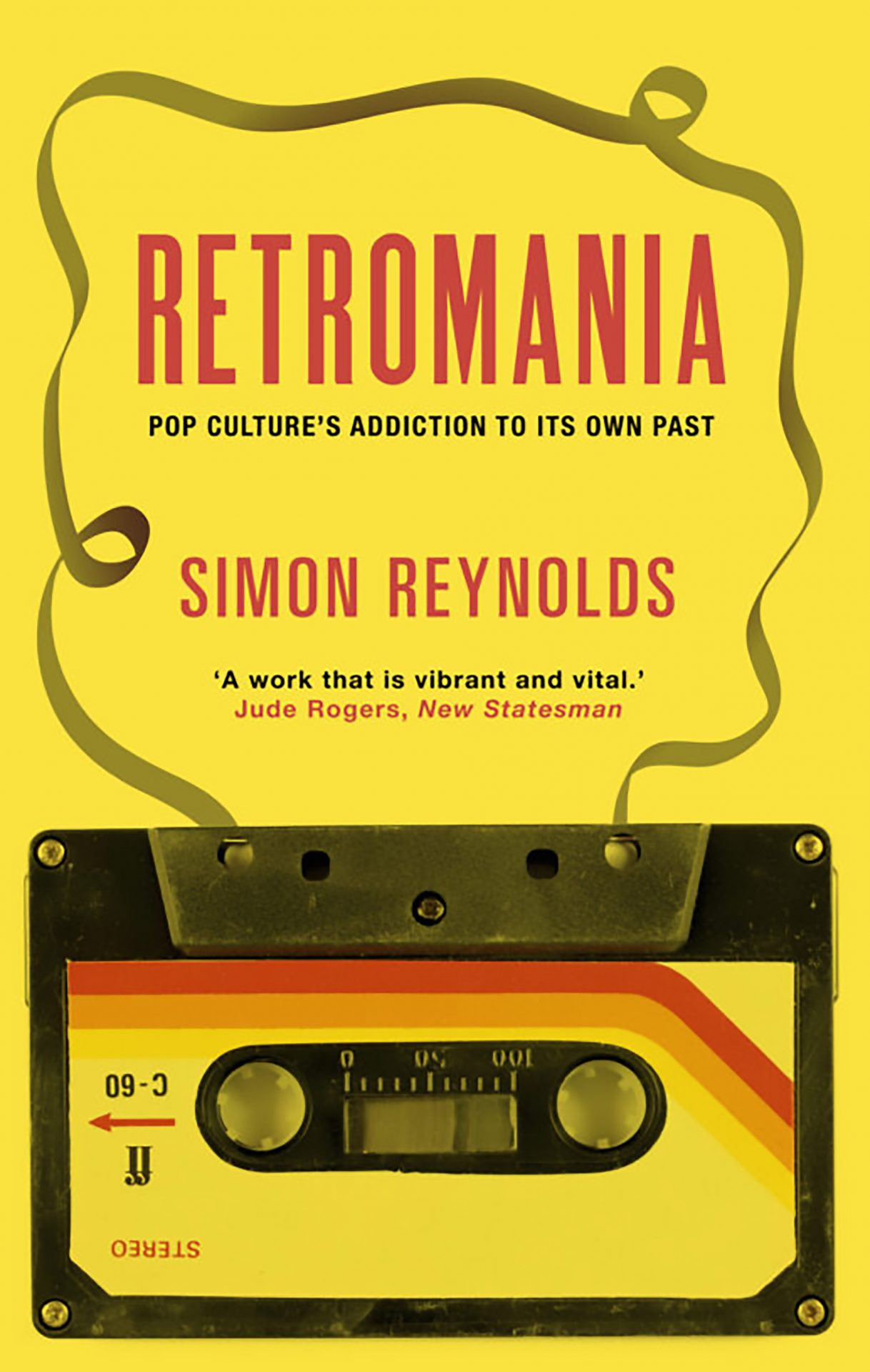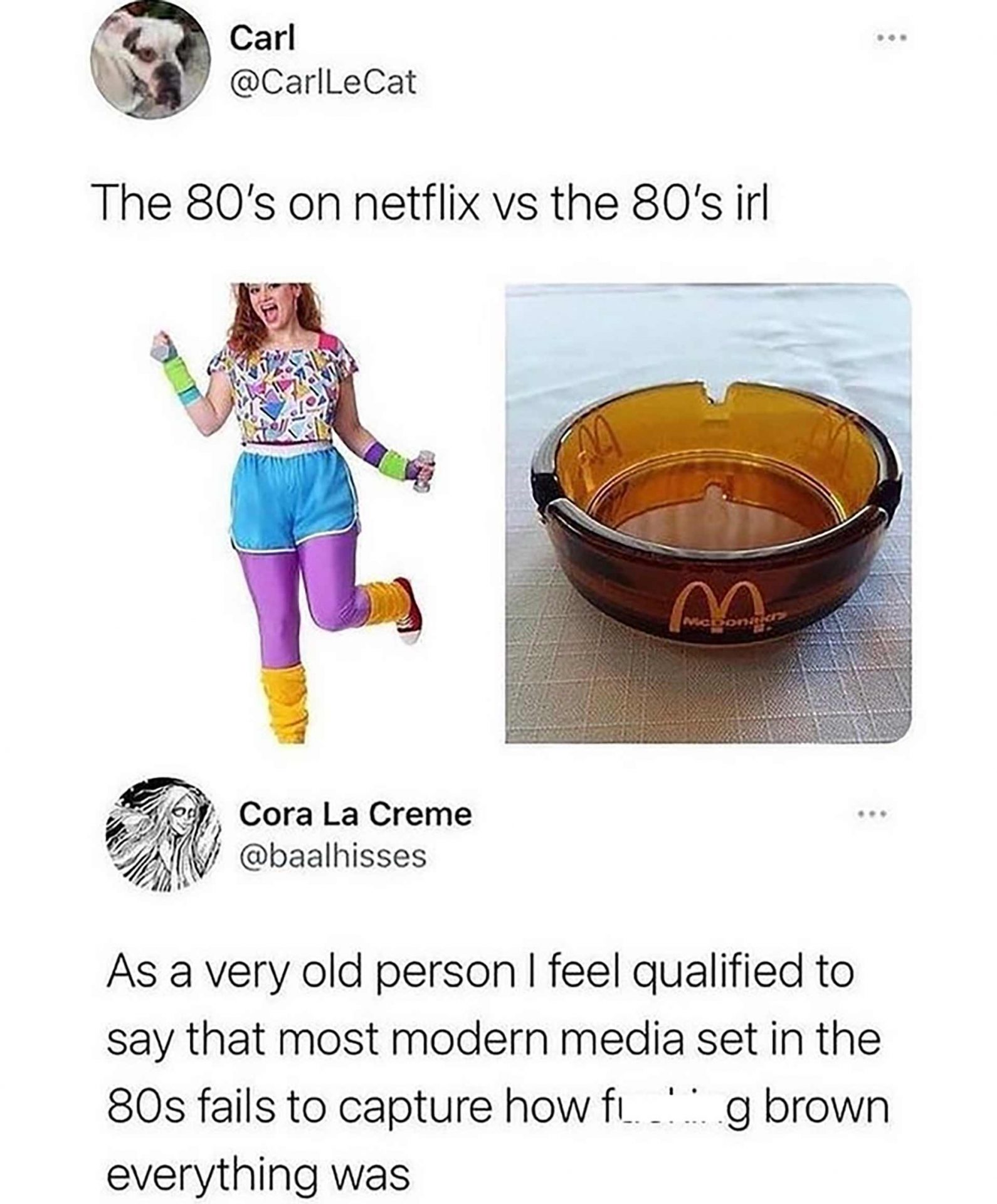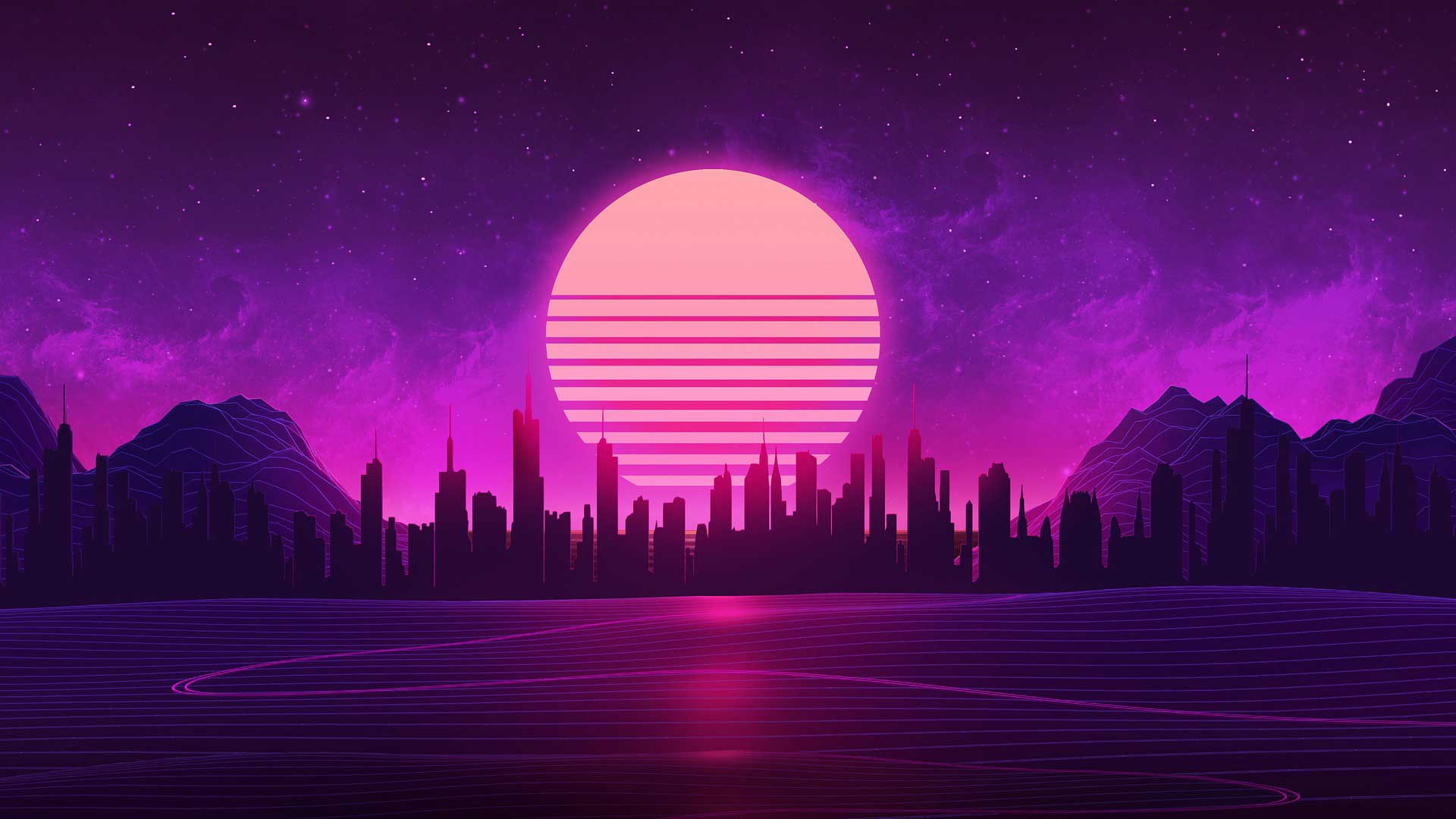Teased hair and bright costumes. Glam metal and disco. Memphis style and colourful neon. We associate the ’80s nostalgia with phenomena that are, if not outright kitsch, at least bordering on kitsch. In spite of this, and despite more than thirty years since its end, the 1980s are constantly making a comeback – in design, music and popular culture. We are unable to get rid of the ’80s- and probably don’t even want to.

One of the most powerful forces in contemporary culture is nostalgia. This state of affairs was perhaps best diagnosed by Simon Reynolds, the British music critic, in his 2011 book Retromania: Pop Culture’s Addiction to Its Own Past. The title of this work summarises its main idea: contemporary popular culture is not so much interested in creating new qualities, but rather in constantly repeating itself. The past is treated as a vast archive of motifs, aesthetics and ideas, from which elements can be selected and combined quite freely – not necessarily in the spirit of chronology or respect for facts.

The 1980s are one of the favourite reference points of retromania. Reynolds, in an article published in The Guardian in 2010, proposed the thesis that the entire first decade of the 21st century was dominated by the ’80s revival – at least in the area of music. In the following decade, the fascination with the 1980s did not end at all – and although it is criticised by publicists from time to time, pop culture does not seem to be bored by it at all. Suffice it to say that one of the most important series of recent years has been Stranger Things – set in the ’80s and credibly imitates the style and aesthetics of films from that era. Musical tributes to the decade, on the other hand, are paid by big pop stars: from The Weeknd to Harry Styles and Miley Cyrus. Why is it that the 1980s are so appealing and so unwilling to end? What is it that keeps us coming back to them with pleasure?
’80 nostalgia and battles for memory
The question of the origins of the contemporary popularity of the ’80s can provoke different answers. Some would see it as ’80s nostalgia for a time of Western economic prosperity when it seemed that history was coming to an end and democracy and capitalism would fulfil all their promises. (Suffice it to say that soon after, in 1992, Francis Fukuyama announced the ‘end of history’. How wrong he was!) Others would point out that the 1980s was actually the era of the birth of pop culture as we know it today. It was, after all, the era of cinematic adventure blockbusters, the new explosion of science fiction (although Star Wars or Alien are franchises that date back to the 1970s), the crystallisation and creative development of significant musical genres (metal, hip hop, electronic music in the broadest sense) or, finally, the popularisation of video games. The 1980s saw the creation of MTV, the World Wide Web and CDs first their first iconic album covers. The technology, business and creators of the ’80s revolutionised popular culture – which is perhaps why it is so keen to draw on the legacy of this era, where the possibilities seemed limitless.
The problem, however, is that capturing the aesthetic (or any other) spirit of the era is a difficult task. It is not easy to do this while living in a given era – when one does not actually know what will be remembered and stand the test of time and what will be considered marginal. On the other hand: analyses carried out years later run the risk of focusing on what is most expressive but not necessarily defining of the times. Moreover, it is difficult to look at any era as an aesthetic monolith – at any given time, the world is full of contradictory trends, and, moreover, these are subject to local mutations. The 1980s are a prime example of this – today, they are sometimes remembered mainly in terms of their cheerful colourfulness bordering on tacky. However, internet users note that the reality was much more nuanced.
Geography and its historical contexts also bring similar challenges. Contemporary pop culture primarily refers to the 1980s in the optics of the prosperous West, particularly the United States. The 1980s, however, had a different specificity behind the Iron Curtain and yet another in the developing world, even if attempts were made there, with better or worse success, to imitate the West. This can lead to a kind of falsification of the image: the creation of perceptions of the 1980s through the prism of experiences that were definitely not commonplace on a global scale. Hollywood films and memes on 9gag.com thus produce a falsely universal 1980s – fascinating, but reconstructed on carefully selected grounds.
The question ‘why are the 1980s so popular?’ thus turns out to be secondary to more serious questions. Is contemporary pop culture really interested in the 1980s, or is it rather interested in its ideas about them? In other words: have the 1980s become a kind of mythical land – a beautiful illusion?
The ’80s that never were
One of the most popular ’80s-inspired visual aesthetics on the internet is the so-called outrun. It is a trend strongly associated with synthwave, a kind of union of various micro-genres of electronic music referring to the 1980s – the two terms are sometimes used interchangeably. Sports cars gliding majestically against a background of palm trees and a setting sun, neon lights illuminating metropolises in violet, but also geometric patterns generated by retro computers – this is how the iconography of outrun could be described in a nutshell. It is not, however, a simple repetition of motifs known, for example, from Miami Vice – outrun is Miami Vice on steroids, enhanced and subjected to shameless excess. The result is that the 1980s are more 1980s than the actual decade ever was.

The aforementioned excess could be blamed on the radicalism typical of niche, online aesthetics – especially as the outrun is mainly expressed in the form of various types of wallpaper, fan art or music album covers. However, more complex works of pop culture are sometimes created according to the same logic. One of these is a video game that has made quite a contribution to the popularisation of the quasi-1980s aesthetic: Hotline Miami by the Swedish duo Dennaton Games. Released in 2012, the game fully follows the ancient principle of decorum, or conformity of content to form. It tells the story of Jacket, a man implicated in mafia murders and gradually losing touch with reality. The game tells its story through a pixel-art visual style, accompanied by synthwave music at times similar to Dungeon Synth genre. The game’s soundtrack was instrumental in the rise to fame of the genre’s biggest star, James Kent, better known as Perturbator. All of this together – storyline, visuals and sound – feels like a certain distillation of the 1980s, not so much an imitation as a concentration of certain characteristic features or imagery. It is not a parody, however, but a pastiche – the exaggeration here is a form of homage, for example, to the action films of the time.
Parodic intentions, on the other hand, certainly guided the makers of Kung Fury, a 2015 short film directed by David Sandberg (who also plays the lead role). Funded by a Kickstarter campaign, the film could arguably be described as an eightiesploitation – its aim is to play with references to 1980s action cinema without any constraints (for example, in terms of good taste). Suffice it to say that the film manages to cram kung-fu, dinosaurs and Adolf Hitler into the plot. The plot and world-building are completely subordinated to the rule of cool and the humorous effect, which should not come as a surprise: after all, this is a relatively low-budget parody of B movies. It’s not just a question of plot, either – the somewhat blurred image not only hides a certain conventionality of the special effects, but also makes it seem like you are watching a VHS cassette. The technical imperfection of the medium becomes the aesthetic template here – a nostalgic connection to the joy of watching bad films on bad equipment.

Are we stuck in the 1980s?
Some time from now, the popularity of aesthetics and references to the 1980s will probably be pointed to as one of the more important hallmarks of the first decades of the 21st century. But does this mean, however, that contemporary pop culture has lost the virtue of any creativity, and we are doomed to constant repetition? Are we stuck in the 1980s for good?
Let’s not be so pessimistic.
Firstly: the nostalgic monopoly of the 1980s is actually coming to an end. The 90s nostalgia still hasn’t reached such heights, but it’s already a reality – and we’ve written about it on our blog. The early 2000s are also making a comeback – for example, in the form of the Y2K aesthetic, which has a particularly strong impact on fashion. Perhaps, in the age of global crises – epidemiological, war, economic, environmental – and the accompanying ‘inflation of familiarity’, we will begin to feel nostalgic about even less distant times. Who knows – maybe just 10 years is enough for something to fall into the retro category.
Secondly: no decade is isolated from earlier ones, but each brings a certain new quality – even imitation can be innovative. The ’80s nostalgia, with all its aesthetic richness, did not emerge from out of nowhere. The aforementioned Simon Reynolds recognised that the ’80s were eager to draw inspiration from the past, for example, the culture of the 1950s. Similarly, today we too draw inspiration from the heritage of past decades – we freely combine their elements, improve, crystallise, distort and remix them. Retromania is rarely a pure reconstruction.

So: the ’80s nostalgia will probably not disappear from our aesthetic and pop-cultural landscape for a long time to come. The constant revisiting of what was, however, will always be a reinterpretation – and therefore, it will be marked not so much by an uncritical fascination with the past, but rather by our current, ‘here and now’ related needs, longings and challenges. Perhaps, indeed, everything has happened already. Or perhaps, in other words: everything, constantly, is happening anew.
Enjoyed this article? Read how our colleagues ponder the ’90s nostalgia and Cyberpunk aesthetic.



